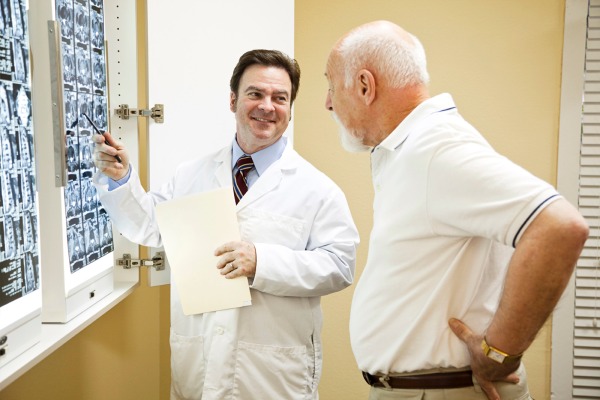
When Dr. Michael R. Marks sees a patient with a new complaint about back pain, he automatically asks, "Anything new going on in your life?"
Most people insist there isn't, so he asks another question that at first baffles them: "Do you have a new car?"
A patient with a new pain in the back sometimes will discover it's the new car — and the inadequate car seat support for the low back — that's triggering the pain, says Marks, an orthopedic surgeon in Norwalk, Connecticut, and a spokesperson for the American Academy of Orthopaedic Surgeons.
Sometimes, it's as simple as reading the owner's manual to take advantage of the seat adjustment potential to help the lumbar region, he says. Overall, ''the beauty of the modern car seat is it gives you enough adjustments so you can add lumbar support.''
If you drive a very basic car — or a very old one — you still have options. You can help your back with aftermarket support in the form of an inflatable pillow or a moldable seat support that's sold at specialty stores or online, Marks and other experts suggest.
If your back is now blissfully pain-free, count yourself lucky. According to a national survey conducted by the Centers for Disease Control and Prevention in 2009, 30 percent of the women surveyed and 26 percent of the men said they had suffered back pain in the previous three months. Over a lifetime, up to 80 percent of people will have a back pain problem. To the rescue: better car seats and do-it-yourself options.
The Status of Back Support in Cars
Even modestly priced cars now offer good back support, Marks says. According to Edmunds data, 80 percent of 2011 model-year vehicles offer driver or driver and passenger lumbar support as standard or optional equipment. Some 44 percent of models offer driver and passenger lumbar support as standard. And 31 percent offer driver-only lumbar support as standard equipment.
Not all lumbar supports are created equal, says Dr. Nick Shamie, an orthopedic surgeon at Santa Monica-UCLA Medical Center & Orthopaedic Hospital in California. He is also a spokesperson for the American Academy of Orthopaedic Surgeons and associate professor of spine surgery at UCLA. In general, he says, German cars are usually very good, "although some American cars are, too," he adds. He especially likes the lumbar support provided by the Porsche 911 and the Porsche Boxster, even though sports cars in general have a bad reputation when it comes to back pain.
Back-comfort systems are also becoming more sophisticated in cars and sometimes are accompanied by heating, cooling and massaging options. For example:
While massaging seats sound idyllic, Marks and Shamie aren't impressed with their effect on relieving back pain.
"I don't think there is any real scientific evidence they have any impact on the back," Marks says. Turning on a heated seat first thing on a chilly morning, however, might help the back feel less stiff, he says.
Getting the Hang of Lumbar Support
For lumbar support to do its job, it's important to adjust it correctly. Marks says the goal is to provide enough support with the seat to maintain lordosis, which is the natural curve of the back and spine just above the buttocks.
"You want something to support that," Marks says. Otherwise, he says, the back "wants to curve like an angry cat. And that stretches out the ligaments and back muscles." Or, as Shamie puts it: ". Just don't do them while you're driving.